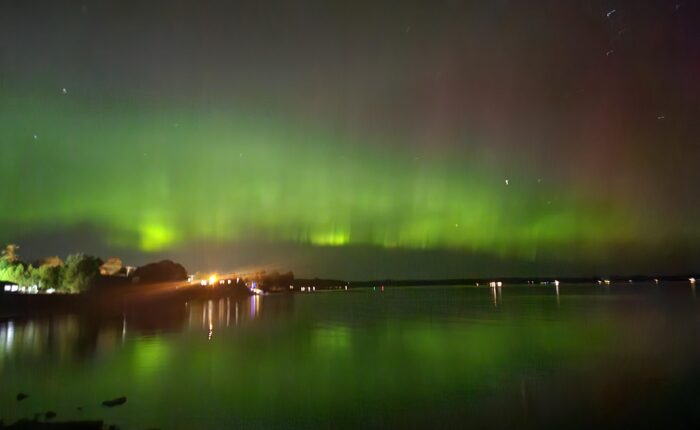Door County, Wisconsin’s picturesque peninsula jutting into Lake Michigan, has a rich maritime history marked by both triumph and tragedy. The waters surrounding this beloved vacation destination hold secrets of the past—dozens of shipwrecks that tell stories of Great Lakes commerce, treacherous weather, and human perseverance. These underwater time capsules now serve as both somber memorials and fascinating dive sites, preserving an important chapter of Wisconsin’s maritime heritage.
Death’s Door: The Perilous Passage
The waters between Washington Island and the tip of the Door Peninsula earned the ominous name “Death’s Door” (Porte des Morts) for good reason. This narrow strait, connecting Green Bay to Lake Michigan, has claimed numerous vessels throughout history. Early Native American canoes, French trading vessels, and later commercial shipping all faced the dangerous combination of shifting shoals, sudden storms, and tricky currents that characterize this passage.
The Potawatomi and other indigenous peoples who first navigated these waters understood the dangers, passing their knowledge to European traders who arrived in the 17th century. Despite this awareness, Death’s Door continued to claim vessels well into the modern era.
The Golden Age of Shipping and Wrecks
The mid-to-late 19th century represented the peak of Great Lakes shipping and, consequently, shipwrecks in Door County. During this period, wooden schooners and early steamers transported lumber, stone, grain, and other commodities essential to the growing Midwest economy.
The **Louisiana**, a three-masted schooner, met its fate in 1887 near Washington Island. After striking a reef during a storm, the crew abandoned ship, but not all survived the harsh waters. Today, the Louisiana’s remains lie in about 15 feet of water, making it accessible to recreational divers and snorkelers.
The **Fleetwing**, a magnificent wooden schooner built in 1867, wrecked in a November gale in 1888 near Garrett Bay. The crew survived, but the vessel couldn’t be salvaged. Parts of its wooden hull remain visible from shore during low water periods.
The Age of Steel and Steam
As wooden sailing vessels gave way to steel-hulled steamers, the nature of shipwrecks changed, but the dangers of Door County waters remained.
The **Frank O’Connor**, a 300-foot steel freighter, sank in 1919 after striking Poverty Island Shoal. This massive vessel now rests in deeper water, serving as an advanced dive site with impressive machinery still visible.
Perhaps one of the most famous Door County wrecks is the **Joys** (formerly the **Success**), a steam barge that caught fire and sank near Fish Creek in September 1898. The shallow wreck site is now a popular spot for kayakers and divers.
Modern Maritime Preservation
In 1969, Wisconsin created the first underwater preserve in the United States to protect the state’s submerged cultural resources. Today, many Door County shipwrecks are part of the Wisconsin Maritime Trail, with some designated as official state archaeological sites.
The **Lakeland**, a car ferry that sank in 1924, and the **Forest**, a schooner lost in 1891, are among the notable wrecks protected within this system. These preservation efforts ensure that future generations can appreciate Wisconsin’s maritime history.
Diving Into History
Door County’s shipwrecks now attract thousands of divers annually. Companies in Sturgeon Bay, Baileys Harbor, and other communities offer guided dive tours to various wrecks, with options for both beginners and experienced divers.
For those who prefer to stay dry, the Door County Maritime Museum in Sturgeon Bay provides detailed exhibits on the area’s shipwrecks, complete with artifacts, models, and interactive displays that bring these maritime stories to life.
Beyond the Famous Wrecks
While well-documented shipwrecks receive much attention, maritime archaeologists believe dozens more undiscovered vessels lie in Door County waters. Ongoing survey work by the Wisconsin Historical Society continues to document these sites, using modern sonar and other technologies to map the lakebed.
The **Christina Nilsson**, a lumber schooner lost in 1884, was only recently fully documented despite resting in relatively shallow water. Each new discovery adds to our understanding of Great Lakes maritime history.
A Legacy of Lighthouses
Door County’s numerous lighthouses stand as reminders of the area’s dangerous waters and efforts to prevent shipwrecks. Structures like Cana Island Lighthouse, Baileys Harbor Range Lights, and Pilot Island Lighthouse have guided mariners since the 19th century, significantly reducing—but never eliminating—the risk of wrecks.
The shipwrecks of Door County represent more than just maritime disasters; they’re physical connections to Wisconsin’s past and the larger story of Great Lakes commerce. As technology improves our ability to locate and document these underwater time capsules, their historical significance only grows.
For visitors to Door County, understanding this submerged heritage adds depth to the peninsula’s beauty, reminding us that beneath the sparkling waters lies a complex history of human endeavor, technological progress, and the eternal respect due to the powerful forces of nature.


My spouse and I stumbled over here by a different website and thought I
mmay as well check things out. I like what I see so now i am following you.
Look forward to cheking out your web page again.